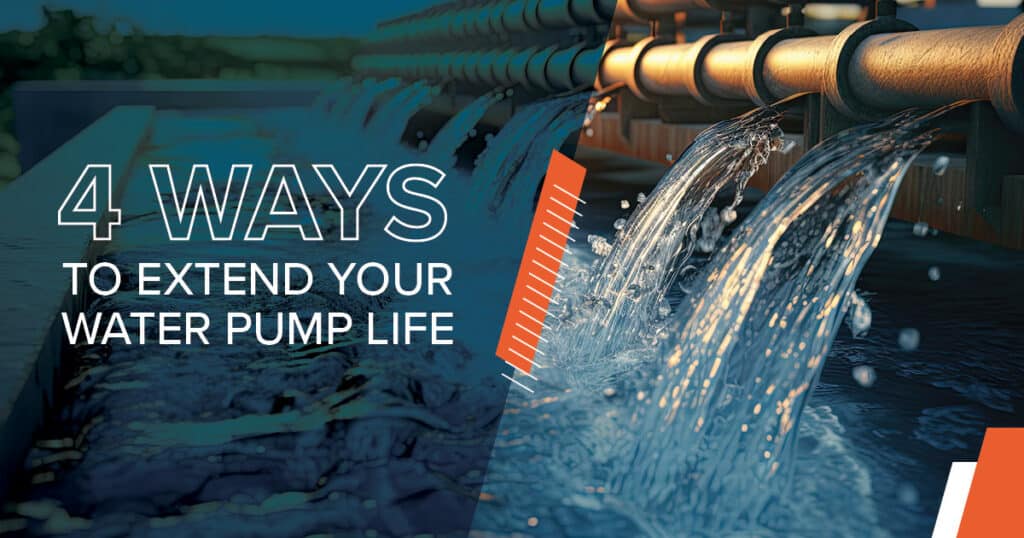Water pumps are commonly used in municipal water and wastewater treatment plants, various industries, and marine applications throughout the world. A variety of pumps are utilized to pump water because it is generally a neutral fluid. However, not all water is equal, and every pumping application brings unique challenges.
Water may contain different salinity levels, minerals, or chemicals that can be corrosive to certain pump materials. Environmental conditions, flow rate requirements, and other factors can also contribute to excess component wear and premature failure. You can take several steps to maximize your water pump life and optimize its performance over the long run.
- Select the right pump.
This is one of the most critical steps that is often underappreciated. At DXP Pacific, we encounter clients all the time who select the wrong pump for the job. You must evaluate the water you are pumping, operating conditions, and your performance requirements. You should analyze every aspect of the operation and application. Then you must research the equipment options available to you and determine which will best suit your needs. Even then, custom design and configuration may be required to achieve the best long-term results. Do not simply expect any pump to handle every water pumping application.
- Select proper pump materials.
Having the right type, size, and configuration of pump is an important first step. Another consideration is the construction materials of the pump and critical components like the impeller, mechanical seals, bearings, pipes, fittings, valves, housing, etc. Again, the water itself may contain elements that can be corrosive to certain pump materials. For example, salt water and marine applications are very different from clean water pumping in terms of corrosion, rust, and abrasiveness. Understand the fluid properties and the external operating conditions that could degrade your equipment. Select the right pump and component materials to provide better durability.
- Install and configure the system correctly.
Now that you have the ideal equipment for your water pumping application, you have to install it correctly. Make sure the shaft alignment is precise and the baseplate mounting is secure to minimize vibrations. Test the motor and make adjustments to dial everything in. Design an effective piping system. Make upgrades and custom configurations as needed. You may also look into advanced monitoring and control systems or a variable frequency drive (VFD) to improve automation and provide enhanced controls.
- Develop a consistent maintenance plan.
Ultimately, the best way to ensure your pump equipment lasts longer is to keep it properly maintained. Even the most durable equipment that is perfectly installed will fail eventually if you aren’t taking care of maintenance. You should have a detailed preventative maintenance plan to replace regularly worn components like seals, bearings, valves, impellers, and lubrication. Your operating staff should be trained on all aspects of routine maintenance and system inspections, along with troubleshooting procedures if something unexpected happens. Be prepared with replacement parts and repair tools to handle both scheduled and unscheduled maintenance tasks. Consider predictive maintenance technology and AI-based monitoring systems that can identify abnormalities and catch problems long before they happen. Put in the effort to keep your equipment running well, and it will tend to last much longer.
These are some of the key steps you can take to keep your water pump running better and lasting longer. For all your pump selection and maintenance needs, contact DXP Pacific. Let our team help you get the most out of your pump system!

